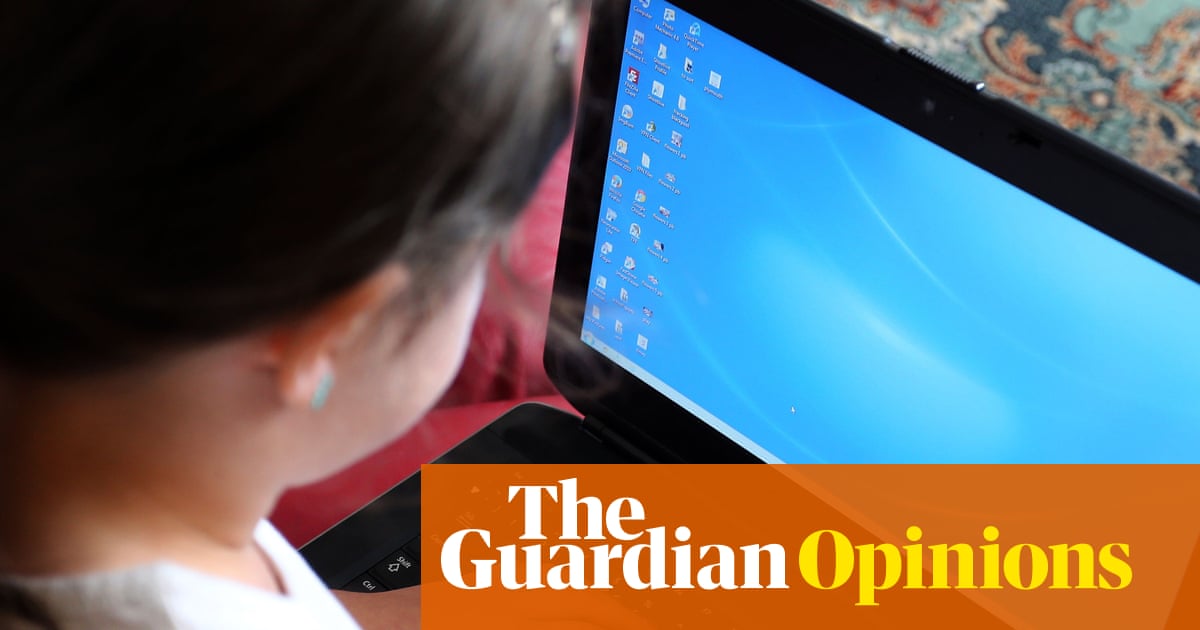This summer the technology secretary, Peter Kyle, announced he was considering a two-hour “screen time” cap on children’s use of social media apps – a proposal that is not just insufficient, it’s outdated.
Though appropriately placed at the start of the summer holiday – a time when kids’ screen time can increase, along with the onus on parents to ensure the safety of such engagement – Kyle’s announcement is linked to somewhat stale screen time guidance. We should indeed be thinking about moderating time on screens, but the proposed cap addresses only the quantity of consumption, not the quality. Fortunately, as someone who lectures on digital literacy (and is a mother), I can tell you there are some ways to push back and create healthier habits for children this summer – even if the government doesn’t seem to have caught up with them yet.
Limiting screen time has been the dominant digital guidance used by parents, educators – and all of us really – over the past decade. This advice emerged after studies indicated that increasing screen time could be a risk factor for being overweight/obesity in children and adolescents. This was, and is, good guidance to promote physical health. However, it didn’t include robust discussion about how the quality or nature of content online might be affecting mental health.
For example, in following this guidance, you could have one child watching CBeebies with their family in a communal space, engaging in discussion; and another child wearing headphones and watching algorithmically driven YouTube shorts. Under “screen time” guidance, these two forms of viewing would be considered equal. But, of course, they are qualitatively very different. In this scenario, one child is engaged in interactive, collective viewing with a parent that might be a jumping-off point for discussion and connection. The other child’s viewing is isolated and fragmented; they are consuming short-form content, probably with little focus on meaningful storylines or characters, on a platform that is still, by comparison, unregulated.
YouTube is where much of our kids’ screen time is spent, and is now the most popular first TV destination for generation Alpha. A staggering 88% of UK children aged three to 17 use the platform. And yet YouTube is often not included in discussions of social media bans, and nor was it mentioned in Kyle’s statement.
There have been attempts to distinguish between types of screen time, such as “passive” and “active” engagement. The Royal College of Paediatrics and Child Health has pushed for policy to focus on habits and behaviours. This might take into account “active screen time”, which involves cognitively or physically engaging in screen-based activities, such as playing games or completing homework on a computer, and “passive screen time”, which includes non-interactive viewing with low levels of intellectual and social engagement. Similarly, the American Academy of Child and Adolescent Psychiatry recommends familiarising yourself with what your child is watching and talking to them about it – and in ways that makes screen time more social, educational and creative. However, for the most part, these suggestions have not been fully embraced by the public or political zeitgeist.
In encouraging more intentional choices about what and how kids are watching, I am not suggesting that heaping personal responsibility on to individuals is the answer. We are in the midst of a digital public health crisis. One that has prompted the US surgeon general Vivek Murthy’s to suggest that social media increases the risk that children will experience symptoms of anxiety and depression. Bold policies that address the underlying technical and financial structures of these platforms are necessary. This is where Kyle should direct his attention.
In the meantime, the proposals Kyle should be offering the public should not be limply drawn from outdated guidance. Proposals should be based on a deeper understanding around differing forms of usage. They should consider both physical and mental health concerns, and address systemic issues in the design of digital platforms. And crucially, they should take into account not just quantity, but also the quality of our children’s digital consumption.
Until then, however, the onus of responsibility will fall primarily on individuals – in this case, on parents – to ensure their children are learning, engaged, active and safe. That sounds overwhelming. I know. If it helps, here are some of the things I’ll be doing with my kids during the summer holidays.
-
For younger children, time off screens is generally better than on. However, when we do use screens, I encourage my own children to watch live TV on platforms such as CBeebies and CBBC, as this provides a diversity of content curated by a children’s programmer. Lots of time and advocacy has gone into producing it.
-
Prioritise active and engaged viewing over passive viewing. This means content that encourages creativity and discussion. This supports active brain engagement, learning and communication skills. It’s often better to opt for collective over solitary viewing, which can act as a springboard for discussion and build critical thinking and social engagement skills.
-
Begin seeding critical thinking about digital content from an early age. You can input questionable images into platforms such as Sightengine, and they will tell you how likely each image is to be fake. This is a great way to start conversations about disinformation online.
-
Speak to older children about what they want their digital diet to look like. Together, dedicate half an hour a week to training the machine learning by actively searching for positive content – content that they are passionate about or that makes them feel good. Don’t watch uninteresting, uninspiring content or content that makes them (or you) feel bad. Quickly move past it. And teach them not to like, share things or comment on things that they don’t like. Even commenting on something you don’t like counts as engagement, meaning you may get more of it.
-
As a family, do an “uninspiring” clean. If it no longer inspires or educates you, unfollow it. This includes exes, TV personalities and brands. Do this regularly to clean up your feed and narrow in on what you do want to see.
-
To combat targeted advertising, there are some Google alternatives you might want to look at as a family. DuckDuckGo or Firefox Focus are search engines that do not track you to serve targeted ads. You could also look at Startpage, which allows you to use Google without tracking your digital footprint.
Governments may not be properly regulating this technology, but as parents, there are still things we can do. We can be more intentional about our screen use – and in doing so, begin to seed the ideas of healthy, critical screen engagement from an early age.
-
Dr Kaitlyn Regehr is the programme director of digital humanities at University College London, lecturing on digital literacy and the ethical implications of social media and AI. She is also the author of Smartphone Nation: Why We’re All Addicted to Screens and What You Can Do About It










